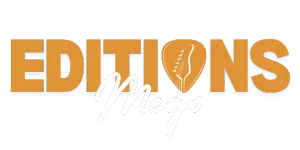The D Major 7 chord is a versatile and rich chord, known for its smooth, dreamy tone, making it a favorite among acoustic guitar players.
Learning different variations of the D Major 7 chord allows guitarists to bring a unique flavor to their playing, especially in fingerstyle and softer acoustic genres.
Mastering this chord in various positions not only enhances your sound but also opens up more options for creativity and experimentation across different styles of music.
Here are the easiest ones:
- Standard D Major 7 Open Chord
- D Major 7 Barre Chord (A-Shape)
- Dmaj7 with Drop D Tuning
- D Major 7 with Added 9th
- D Major 7 in the CAGED System
- Dmaj7 Sus2 and Sus4 Variations
Let us talk about them in greater detail.
Table of Contents
Toggle1. Standard D Major 7 Open Chord
The Standard D Major 7 open chord is one of the simplest and most accessible versions. To form this chord, place your index, middle, and ring fingers on the second fret of the G, B, and high E strings, respectively, while allowing the D string to ring open.
This creates a chord voicing using the notes D, F#, A, and C#, giving it that characteristic lush, major 7th sound.
For a clean and crisp sound, ensure that your fingers are positioned properly, pressing down on the strings without muting adjacent strings. It’s also important to focus on using the right amount of pressure to prevent buzzing.
The open D string resonates deeply, adding richness. This Dmaj7 shape is commonly used in ballads, smooth jazz, and pop acoustic songs due to its warm and expressive quality.
Practicing transitions between the Standard D Major 7 chord and other open chords, like G or A, will help improve your ability to integrate it seamlessly into chord progressions.
2. D Major 7 Barre Chord (A-Shape)
For players looking to add more variety and versatility to their repertoire, learning the D Major 7 as a barre chord in the A-shape is essential.
The A-shape barre chord form allows you to move the chord up and down the fretboard, giving you access to different voicings.
To play the Dmaj7 in this position, start by barring the fifth fret with your index finger.
Then, place your ring finger across the seventh fret of the following strings:
- D
- G
- B
In this shape, the root note is found on the A string, and it allows for a fuller sound compared to the open version.
The barre chord requires strength and precision, so it’s important to practice getting a clean sound by applying consistent pressure with your barre finger.
One of the main benefits of learning barre is the flexibility it gives you to play the same chord in different positions, which helps create dynamic progressions.
By mastering this A-shape Dmaj7, you’ll be able to seamlessly shift between other barre, enhancing the fluidity of your playing.
3. Dmaj7 with Drop D Tuning
Drop D tuning introduces a whole new dimension to playing the D Major 7 chord by adding deeper resonance and fullness.
Drop D tuning involves lowering the pitch of the low E string by one whole step to D.
To form a Dmaj7 in Drop D, you still place your fingers as you would in the Standard Dmaj7 chord, but the open low D string adds a more profound bass presence.
Start by tuning the low E string down to D. Once the guitar is in Drop D, finger the Dmaj7 shape on the second fret of the G, B, and high E strings while allowing the low D, D, and A strings to ring open.
The result is a deeper, fuller sound compared to standard tuning, making it ideal for acoustic ballads and fingerpicking. The lower bass note provided by Drop D enhances the harmonic depth of the chord, giving your playing a more expansive feel.
4. D Major 7 with Added 9th
The D Major 7 chord can be enriched even further by adding a ninth, forming the Dmaj9 chord. This variation brings a jazzier, more colorful feel to your playing.
The ninth note (E) adds a layer of sophistication and complexity to the chord, making it a popular choice for:
- Jazz
- R&B
- Neo-soul
To form the Dmaj9, you can add the E note to the standard D Major 7 shape. One common voicing for Dmaj9 is placing your index finger on the second fret of the G string, your middle finger on the second fret of the high E string, and your ring finger on the third fret of the B string.
The open D string serves as the root, while the added ninth (E) creates a lush, extended sound.
This chord works well in jazz-influenced chord progressions, adding a layer of richness and sophistication. Practicing the transition between Dmaj7 and Dmaj9 will help you add a sense of movement and progression to your compositions.
5. D Major 7 in the CAGED System
For intermediate players looking to expand their knowledge across the fretboard, learning D Major 7 within the CAGED system is an invaluable tool.
The CAGED system allows you to play the same shape in different positions, giving you a deeper understanding of the guitar’s fretboard.
The Dmaj7 chord can be played in various forms using this system, with shapes derived from:
- C
- A
- G
- E
- D
Each of these shapes allows you to play the Dmaj7 in a different area of the neck, providing new voicings and textures.
For example, the A-shape Dmaj7 is commonly used at the fifth fret, while the C-shape and G-shape voicings offer even more unique sounds.
6. Dmaj7 Sus2 and Sus4 Variations
Suspended chords like Dmaj7 Sus2 and Sus4 add tension and movement to progressions. These variations are great for adding a sense of anticipation and release, especially in acoustic compositions.
The Dmaj7 Sus2 involves replacing the third note with the second (E), creating a more open, unresolved sound, while Dmaj7 Sus4 replaces the third with the fourth note (G), building tension.
To play Dmaj7 Sus2, you can simply lift your finger off the G string in the standard Dmaj7 shape, allowing the open G string to ring.
For Dmaj7 Sus4, place your finger on the third fret of the G string. These can be used in combination with the standard Dmaj7 to create interesting chord progressions that maintain a sense of movement.
The Bottom Line
Mastering the D Major 7 chord and its various shapes opens up a world of musical possibilities.
From the standard open to barre chords and unique voicings like Dmaj9, each variation adds a different flavor to your playing.
Practice and experimentation with these will enhance your overall understanding of harmony, and push you to explore new creative directions in your acoustic guitar journey.
Related Posts:
- How to Clean and Maintain Your Acoustic Guitar
- A Step-by-Step Guide to Barre Chords for Acoustic…
- Oasis Joins Growing List of Major Bands Touring in 2025
- How to Tune a Floyd Rose: Tips for Beginners and…
- How Hip-Hop Turned NBA Players Into Cultural Ambassadors
- Arizona Cardinals Greatest Players and Their Legacy…

















